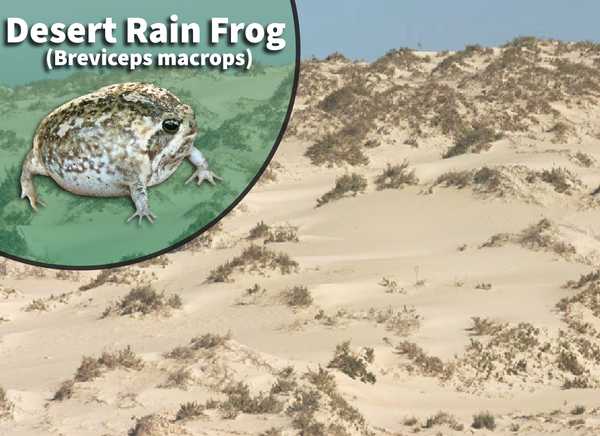Rain Frog for Sale: Unlock the Elegance of Nature with Your Own Amphibian Friend!
Rain Frog for Sale: Unlock the Elegance of Nature with Your Own Amphibian Friend!
Blog Article
The Most Effective Reptile Enclosures: Exactly How to Create the Ideal Environment
Producing the perfect environment for reptiles is not almost putting them in a storage tank or enclosure; it involves a thoughtful factor to consider of various variables that add to their total health. From the dimension of the room to the kind of substrate utilized, every component plays a critical duty in providing an environment where your reptile can flourish. By recognizing the certain requirements of your reptile species and carrying out the appropriate environment setup, you can ensure their wellness and joy in captivity.
Choosing the Right Enclosure Size
When selecting an unit size for reptiles, it is crucial to consider their natural actions and room requirements to ensure their wellness and health. When it comes to habitat area, various reptile types have differing requirements. Arboreal varieties like chameleons or tree serpents need upright area for climbing up and perching, while terrestrial varieties such as bearded dragons or leopard geckos need even more floor room for checking out and thermoregulation. Marine turtles like red-eared sliders require units with both water and acreage for swimming and basking.
A general policy of thumb is to supply ample area for the reptile to exhibit natural behaviors, such as basking, concealing, climbing up, and foraging. By thoroughly thinking about the specific demands of the reptile species in question, owners can develop a suitable and improving habitat that advertises general well-being and urges all-natural behaviors.
Setting Up Correct Burner
To make sure the wellness and health and wellness of reptiles in their enclosures, it is vital to very carefully establish proper burner. Reptiles are ectothermic animals, suggesting they rely on exterior warmth sources to manage their body temperature. When setting up burner in a reptile enclosure, it is essential to think about the certain temperature needs of the varieties you are taking care of. Different reptiles have differing temperature level needs based on their natural environment, so it is essential to research and comprehend these requirements.
One efficient and usual burner for reptile enclosures is a warm lamp or ceramic heat emitter. These warmth resources can be utilized to produce a temperature gradient within the room, allowing reptiles to relocate between warmer and cooler areas as required. In addition, under-tank hot pad or warm mats can be made use of to give tummy warmth, which is specifically useful for reptiles that require extra heat to assist in food digestion.
Keeping an eye on the temperature within the enclosure making use of a thermometer is necessary to ensure that the home heating components are preserving the proper temperature level array for your reptile. On a regular basis inspect and adjust the heating aspects as needed to create a comfy and healthy and balanced atmosphere for your scaly friend.
Selecting Appropriate Lighting Components

Supplying the Ideal Substrate
Picking the ideal substratum is essential for producing a appropriate and comfortable setting for reptiles in their units. Some reptiles, such as desert-dwelling types like bearded dragons, flourish on substratums like calcium sand or reptile carpeting, while others, like round pythons, like coconut husk or aspen bed linen to keep moisture degrees.
In addition, the size of the reptile ought to additionally influence your option of substratum, as hatchlings may need a better material to avoid consumption. Avoid substratums that can create impaction, such as loosened substratums like sand or gravel, particularly for reptiles recognized to ingest my sources their bedding. Routinely cleaning and replacing the substratum is crucial to make certain a sanitary and clean environment for your reptile. By picking the ideal substratum, you can add to the general health and well-being of your flaky buddy.
Decorating for Enrichment and Convenience
Thinking about the substratum's duty in offering a foundation for all-natural habits and preserving an appropriate environment, enhancing the reptile unit with correct designs is important for both enrichment and convenience. Decorations such as branches, rocks, hideouts, and artificial plants not only develop a more aesthetically attractive habitat however additionally serve useful objectives. Branches give climbing up opportunities for arboreal species, while rocks can act as basking places for heat. Hideouts use shelter and security, decreasing tension levels for the reptile. go Man-made plants not just boost the looks yet also supply hiding places and enrichment by enabling the reptile to explore and engage with its setting. When enhancing the enclosure, it is necessary to take into consideration the reptile's species-specific needs and habits to develop a room that promotes physical and mental well-being. By incorporating a variety of decorations that simulate the reptile's all-natural environment, proprietors can ensure their pet's convenience and boost their all-natural instincts, ultimately bring about a better and healthier reptile.
Conclusion

Producing the ideal habitat for reptiles is not simply concerning placing them in a container or room; it entails a thoughtful consideration of various aspects that add to their overall well-being.Choosing the appropriate substrate is necessary for creating a ideal and comfortable environment for reptiles in their enclosures. Some reptiles, such as desert-dwelling species like bearded dragons, prosper on substrates like calcium sand or reptile rug, while others, like ball pythons, prefer coconut husk or aspen bedding to preserve humidity degrees.
By incorporating a selection of decorations that simulate the reptile's all-natural habitat, proprietors can ensure their pet's convenience and stimulate their all-natural impulses, ultimately leading to a better and healthier reptile.
In conclusion, creating the perfect environment for reptiles involves picking the ideal enclosure dimension, heating elements, lighting components, substratum, and designs.
Report this page